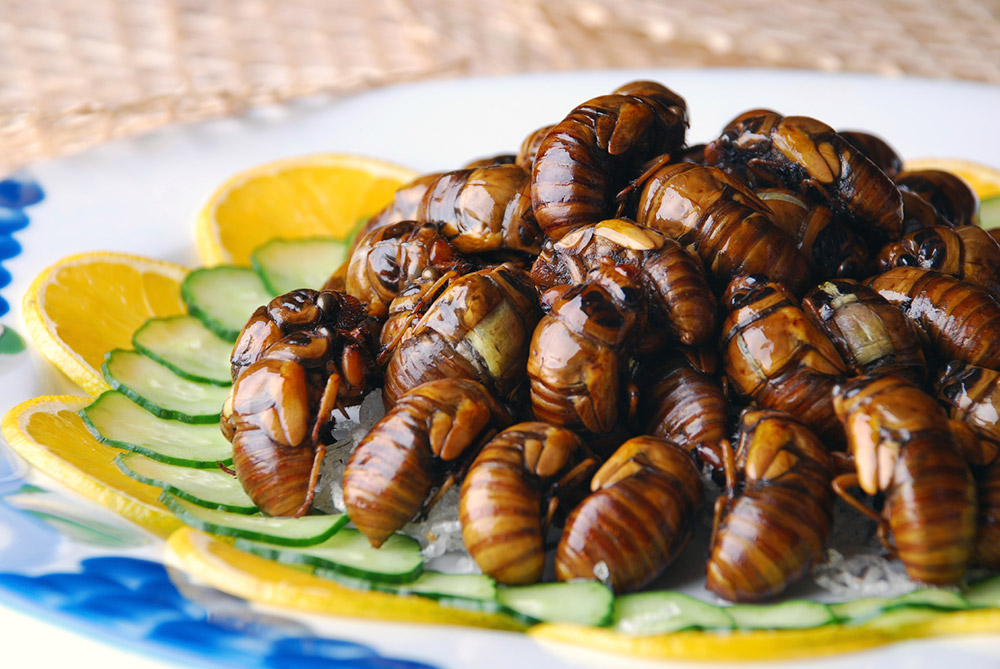Here comes Swarmageddon!
This spring and summer, trillions of cicadas will emerge in the eastern United States
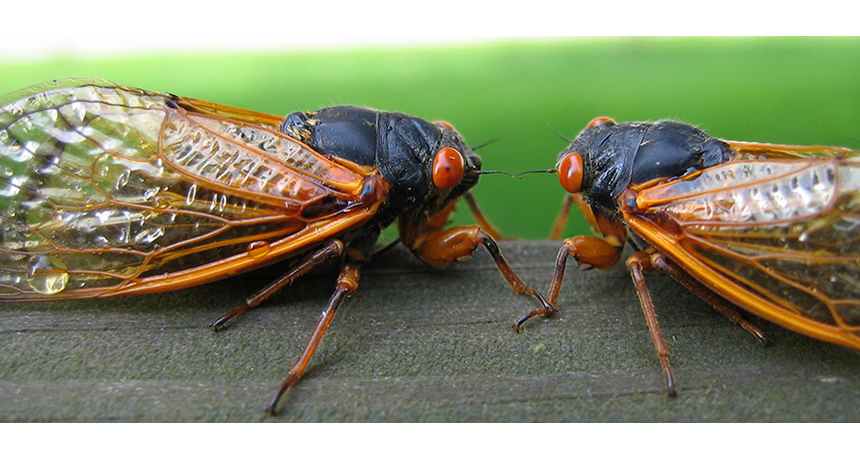
Two adult cicadas size each other up on a wooden railing.
rbmiles/iStockphoto
By Sid Perkins
If you live in the eastern United States, get ready for a coming-out party. A really loud one. Between now and late July, cicadas will be emerging from the ground in an area that stretches from northern North Carolina to Connecticut and New York’s Hudson River Valley. When large numbers of the adult insects convene, the collective noise made by males can approach 90 decibels — about the same as a gas-powered lawn mower.
“Where the cicadas emerge, it will be spectacular,” says Michael Raupp. He’s an entomologist at the University of Maryland, College Park. Across some small areas, cicada concentrations may approach 1 trillion insects per square mile. That’s like having nearly 4 million cicadas emerge from a patch of ground the size of your bedroom floor (but not all at once, of course).
Most adult cicadas are about 5 centimeters (2 inches) long, although tropical species can be much larger. The best-known species in North America are periodical cicadas, which typically emerge from the ground once every 13 years or 17 years.
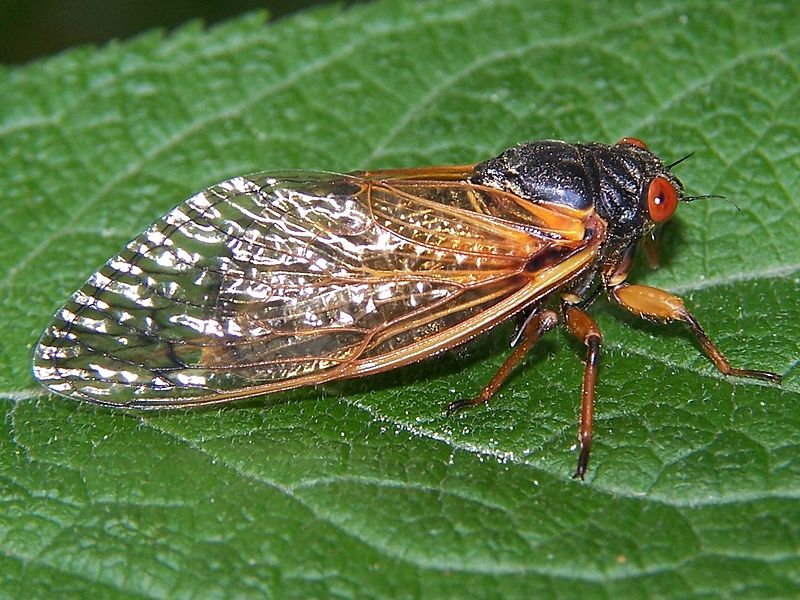
Scientists have assigned each cicada brood, which emerges in a specific region of the country, its own Roman numeral. Some 15 different broods of periodical cicadas exist. This year’s group, a 17-year variety, is called “Brood II.” (So 17-year broods in different regions of North America may emerge many years apart.)
Periodical cicadas spend more than 99 percent of their life underground. There, they slurp nutrient-rich fluids from the roots of certain trees and shrubs. These underground young are known as nymphs, an immature stage that resembles adults.
While latched onto roots, nymphs track the passage of time by noticing chemical changes in their meals. Early in the final springtime of their lives, the nymphs will burrow escape tunnels to the surface. Then each bug will return to root level until the soil temperature reaches roughly 64° Fahrenheit (about 18° Celsius). At that point, the nymphs will surface again, climb out and promptly ascend the nearest tall object. There each molts one last time, becoming an adult.
“You see the insects in a mad, desperate dash for the trees so they can survive and mate,” Raupp says. “Birds and squirrels will be eating them. It’s life. It’s death. It’s romance. It’s a massive display of Mother Nature’s wonder — in my opinion, at its best.”
Why such a long youth
Scientists don’t know why periodical cicadas evolved to emerge only once every 13 or 17 years. Indeed, some cicada species have only a 1-year cycle. But biologists suspect that the infrequent but simultaneous appearance of huge numbers of adults helps the species survive. “There’s safety in numbers,” Raupp says.
If roughly the same number of cicadas emerged every year, populations of their predators might expand to accommodate the feasts. But when big broods emerge only once every other decade, those diners can’t wait. So predator numbers remain low compared to the emerging cicadas.
That allows many of the bugs to avoid becoming someone’s lunch. Their mass emergence “helps cicadas overwhelm the predators that feed on them,” Raupp explains. This ups the number of survivors available to spawn the next brood.
Adult cicadas live for only two to four weeks. During that brief time they mate and then the females lay eggs in the tender young branches of trees. Those eggs hatch after a few weeks. The young drop to the ground. At once, each tiny nymph begins burrowing down to find plant roots onto which it will feed. If it comes from a periodical species, this nymph will spend more than a decade doing little but eating.
You might think that large numbers of parasites slurping nutrients from the roots of trees and shrubs for an extended period would harm plants. And Raupp says “It’s a wonder that we don’t see more damage.” But to date, research has not demonstrated that the underground activities of cicadas cause significant damage to their hosts. Those same studies do suggest, however, that the growth of trees and shrubs undergoes a spurt in the year after cicadas emerge (when the feeding nymphs are very small). That’’s one sign that root-slurping nymphs do slow their hosts’ growth.
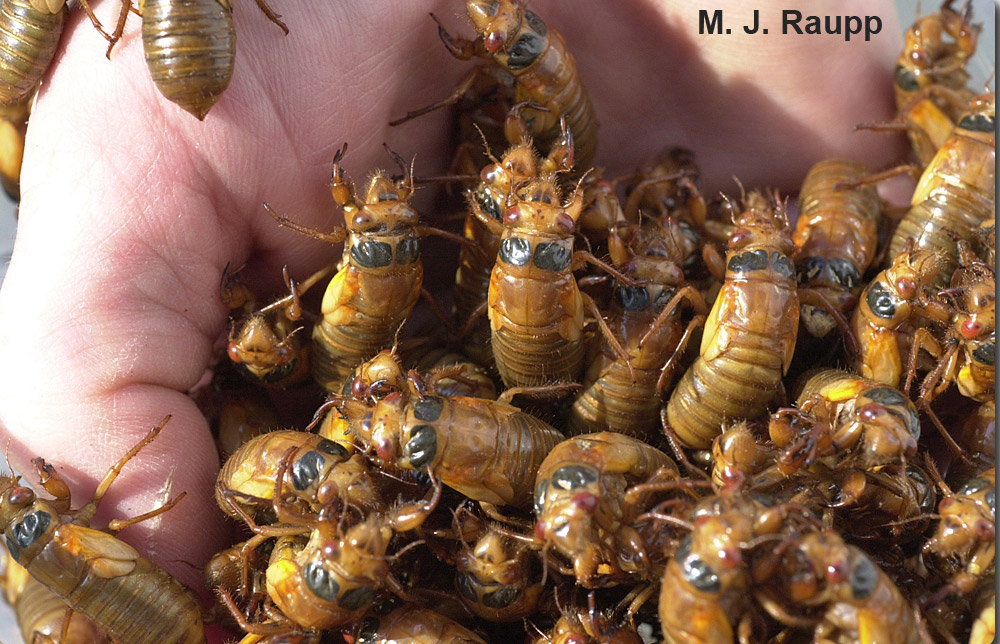
But overall, cicadas probably help the environment, not hurt it. Their burrowing churns up the ground, loosening the soil, notes Raupp. That not only helps air reach plant roots but also helps water percolate deeply.
Big and noisy, cicadas frighten especially squeamish people. “But chill out,” Raupp cautions. Learn as much about them as you can. People should realize that they aren’t going to harm children or pets.
Although Raupp studies all sorts of insects, one of his first childhood memories about insects involved a cicada emergence when he was 10. “I remember going out on the playground in the middle of the day.” And oh the noise. It sounded “like they were using chainsaws out there,” he recalls. “Girls were screaming. The boys were laughing and collecting cicadas to scare the girls with. It was quite an event!”
Mapping the noise makers
Many scientists will be tracking the 2013 cicada emergence. You can too. Just go to this website. You can even help researchers by reporting any of the 2013 brood that you see or hear.
By May, these maps already showed some cicadas were emerging throughout the Brood II zone. But soil temperature largely sets when peak emergence occurs, so large numbers of the insects will not appear until late spring or early summer, says John Cooley. He’s an evolutionary biologist at the University of Connecticut in Storrs.
The farther north you live, the later the peak emergence will occur. That means “you’ll be able to see and hear cicadas in New York’s Hudson Valley until July,” he says.
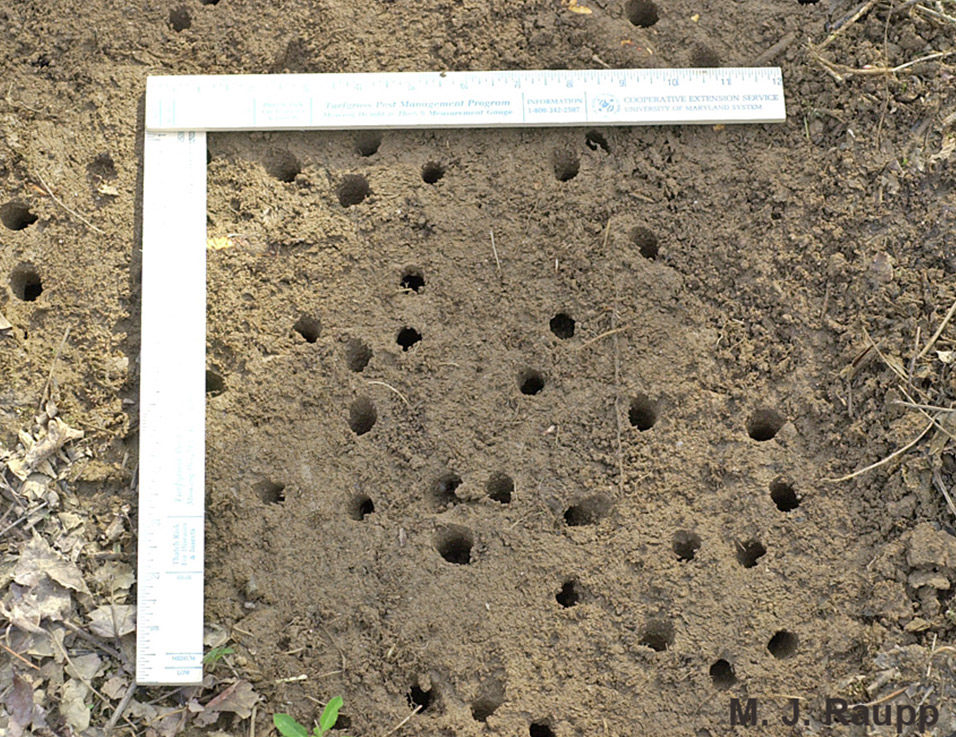
Cooley and his team will use the incoming reports to update maps as the cicada emergence unfolds. These data will aid their long-term research. Those data also will help others monitor the health of forests — and how cicadas might be affected by climate change.
To learn much more about these insects — and even hear recordings of their songs — visit this website. Listen to even more recordings of cicadas at insectsingers.com.
Mmmm, mmmm, good!
When cicadas emerge in a mass from the ground, their predators receive an all-you-can-eat buffet. Even critters you don’t normally think of as predators will give them a try, says Raupp. For instance, “dogs, cats, coyotes and even deer will eat cicadas.”
Some people will too. Like many insects, cicadas are rich in protein. Since they eat only plants, they’re low in cholesterol and unhealthy fats. Cicadas have been a food staple for many people, including American Indians and Australian aborigines. These insects were even considered a delicacy in ancient Greece and Rome and remain popular in modern-day Japan.
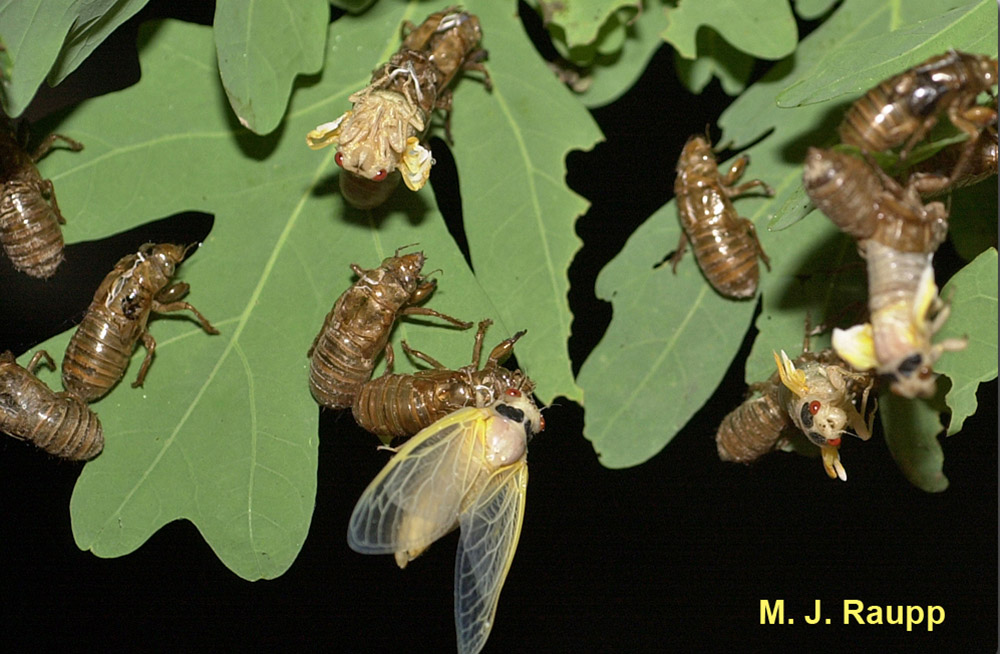
There are many different ways to prepare cicadas, according to a University of Maryland cicada cookbook. But almost all recipes involve boiling the insects for 4 to 5 minutes, which kills any soil bacteria they may have picked up. Boiling also helps solidify their gooey insides, note the insect-inspired “chefs” at the university. Freshly molted adults are most tender because their external “skeletons” haven’t yet hardened. Next best are adult females, which are filled with tasty fat.
But proper meat preparation will heighten a diner’s experience. So the Maryland recipe gurus recommend removing wings and legs. Then let your taste buds guide you.
Cicadas can enrich the protein content of everything from pies and pizzas to tacos and Oriental dumplings. Some recipes can have quite a few ingredients. (Maybe that helps hide the cicada’s nutty flavor?) But one of the simplest ways to eat these insects: Dry roast and salt them. Or for a decadent treat, dip the roasted bugs in chocolate. Yum!
In 2009, Science News for Kids editor Janet Raloff visited “Bug Appétit,” a restaurant serving insect-based cuisine at the Insectarium in New Orleans. There, she sampled Chocolate Chirp Cookies (which included crickets, of course), a fruit spread called chutney that included waxworms, and more. Read about the bug-munching fun here.
And for the more adventurous diners, here’s a simple seasonal recipe.
The Simple Cicada
(used with permission from Cicada-licious)
Ingredients
2 cups blanched cicadas
butter to sauté
2 cloves garlic, crushed
2 tbsp finely chopped fresh basil, or to taste
olive oil (to taste)
pasta (your choice of type)
Parmesan cheese (optional)
Directions:
1. Melt butter in sauté pan over medium heat.
2. Add garlic and sauté for 30 seconds.
3. Add basil and cicadas. Continue cooking for 5 minutes — or until the cicadas begin to look crispy — and the basil is wilted( turning down the heat, if necessary, along the way).
4. Toss with pasta and olive oil. Sprinkle with Parmesan cheese, if desired.
Yield
4 servings
